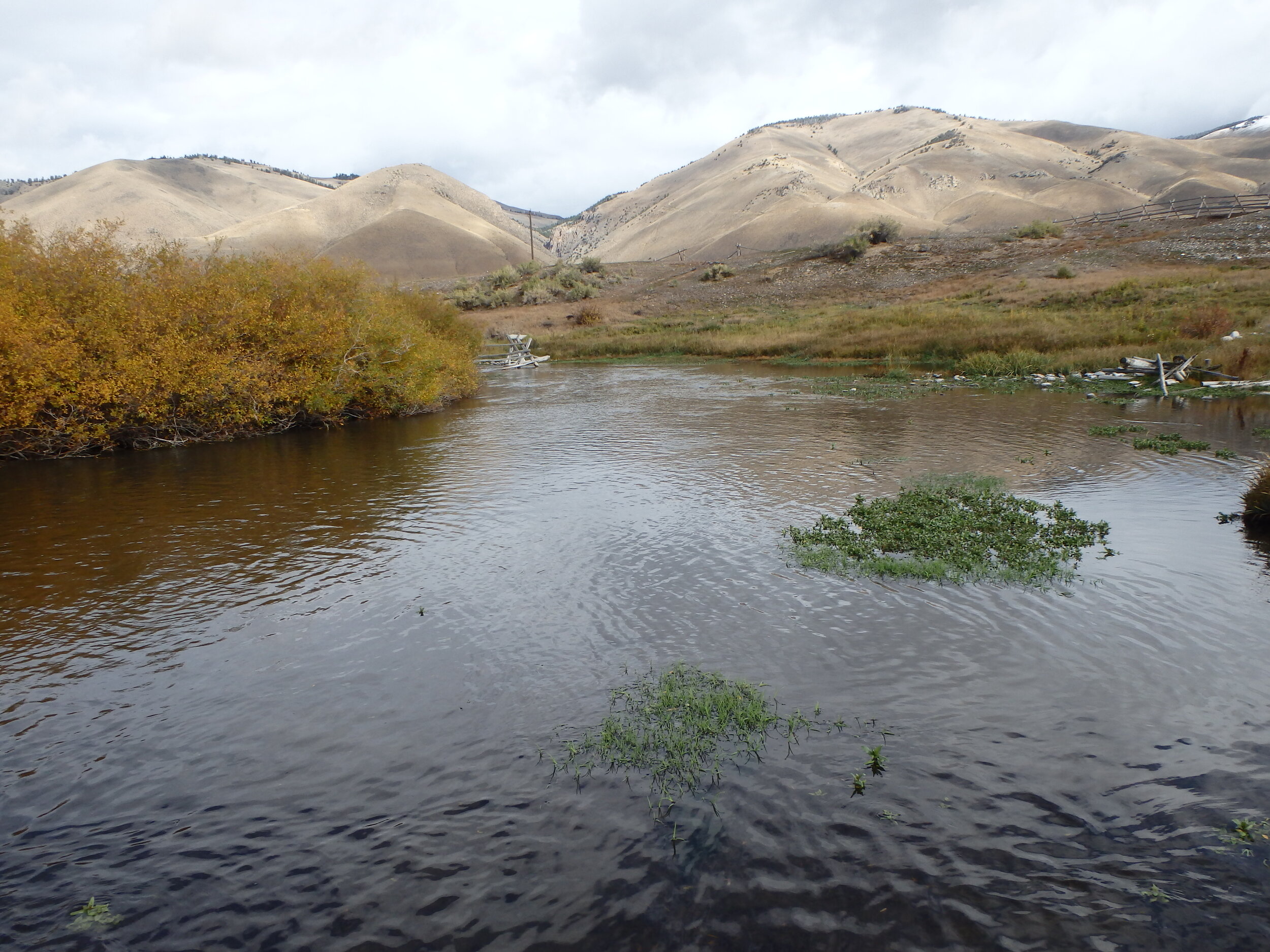Lemhi River Salmon Habitat Restoration
Project Highlights
· Relocated stream segments to utilize existing native vegetation to create immediate increases in shade conditions
· Created channel constrictions to maintain scour pools and route fine sediment
· Utilized a diversity of treatment types to enable comparison and evaluation of best practices for future projects
Services Provided: Topo & Bathymetric Survey; Wetland & Native Vegetation Survey; Edge Treatment & Native Plant Revegetation Plans; 404 Permitting; Construction Management; Post-project Monitoring
Flow Range: 40 – 350 cfs
Design Approach: Intermountain Aquatics provided ecological design support to the RIO Applied Sciences & Engineering team for this project. Intermountain Aquatics developed innovative edge treatment designs to ensure that robust boundary conditions were established throughout the project area and assisted with channel pattern designs to utilize existing mature, native vegetation.
River is re-located to utilize existing willows, large woody debris provides bank stability, scour, and habitat
Revegetation includes transplanted wetland sod and containerized willows above a fabric-encapsulated soil lift
Pre-project conditions: overly wide, shallow, and straight
1 year post-construction: narrowed channel, added sinuosity, native vegetation starting to become established
3 years post-construction
Pre-project: Overly widened channel section
3 years post construction: Post and line willow weave installed to encourage sediment deposition and channel narrowing.
*Note clean spawning gravels on river right. These are a direct effect of this structure.
Pre-project
*Note small willows on river left. These willows were stunted due to heavy browse.
3 years post-construction.
*Note the size of willows on river left. Temporary exclusion fencing was installed to reduce browsing pressure allowing these plants to grow above browse height. The fencing will be removed after a few more seasons and the willows will begin to contribute significant shading to the stream channel.
Pre-project: wide shallow channel with no cover for fish, widespread bank erosion
3 years post-construction: narrow deep channel with woody debris providing cover for both adult and juvenile fish











